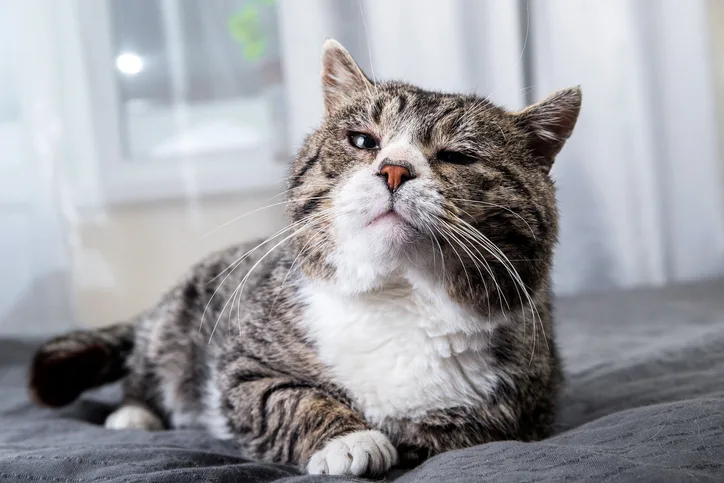Blood Glucose Concentrations in Senior Cats
Andrew Bugbee, DVM, DACVIM (SAIM), Texas A&M University

In the Literature
Reeve-Johnson MK, Rand JS, Vankan D, et al. Cutpoints for screening blood glucose concentrations in healthy senior cats. J Feline Med Surg. 2017;19(12):1181-1191.
The Research …
Similar to humans, many cats experience a period of carbohydrate intolerance before onset of fulminant diabetes mellitus (DM), termed prediabetes.1,2 Early recognition of this stage could enable clinicians to implement preventive measures (eg, weight loss), thereby preventing development of a diabetic state. An objective of this study* was to define a screening blood glucose (BG) concentration cutoff using healthy cats of ideal BCS (BCS, 4-5/9) that could be applied to a population of overweight and obese cats to help facilitate detection of a prediabetic state.
A population of cats of ideal BCS (n = 49) was used to establish a normal screening BG concentration range with an upper reference limit of 189 mg/dL. Screening BG was defined as the patient’s glucose concentration at the time of presentation and any time after eating. Samples were collected via marginal ear vein or pisiform pad stick, and BG concentration was measured using a glucometer calibrated for feline blood. When this screening BG concentration cutoff was applied to the obese cat group (BCS, 8-9/9; n = 26), no value was found to be above the reference limit, suggesting glucose intolerance was not present in this population.
The study also evaluated the impact of several factors on the screening BG concentrations obtained, including various patient characteristics (eg, age, BCS), stress exhibited during sampling, carbohydrate intake, and fasting BG concentrations (upper limit for cats with ideal BCS was found to be 116 mg/dL). None were statistically shown to alter screening BG concentration variability significantly.
In addition, the study investigated how different methods of blood collection or BG concentration analysis impacted variability of BG concentration readings. Glucometer readings differed when samples were immediately tested following an ear/pad prick as compared with jugular venipuncture. In addition, ear/pad prick glucometer readings differed from results obtained using jugular blood stored in preservative-containing collection tubes and from those of samples analyzed by an external laboratory.
… The Takeaways
Key pearls to put into practice:
BG concentrations should be screened in senior cats presented for routine health assessment; a BG concentration >189 mg/dL is indicative of possible glucose intolerance.
Cats with a screening BG concentration >189 mg/dL should be reassessed within 4 hours to rule out stress hyperglycemia.
Persistent hyperglycemia in otherwise healthy cats may warrant determination of an 18- to 24-hour fasted BG concentration (upper reference limit, 116 mg/dL) and/or a glucose tolerance test to fully elucidate whether prediabetes is present.
Clinicians should adhere to a consistent BG concentration assessment methodology to minimize variability in results obtained.
*This study was partially funded by Abbott Animal Health, Illinois, US.
You are reading 2-Minute Takeaways, a research summary resource presented by Clinician’s Brief. Clinician’s Brief does not conduct primary research.